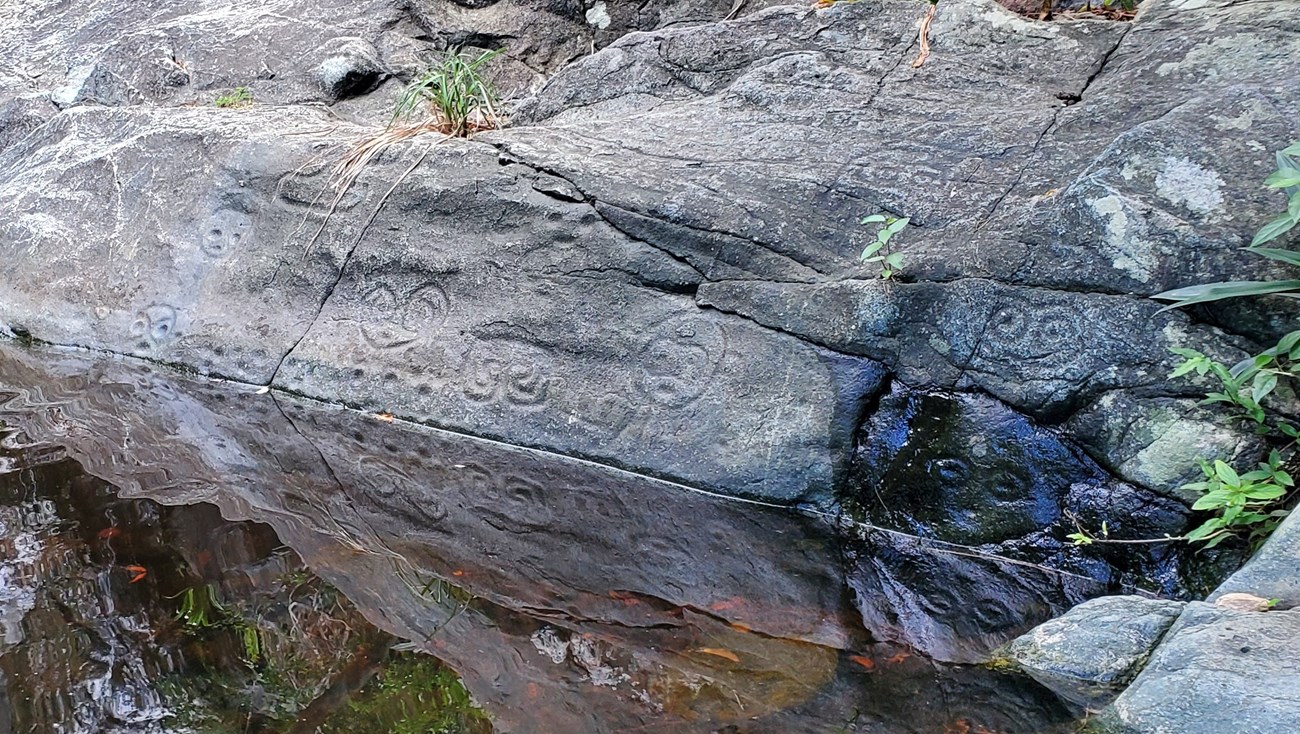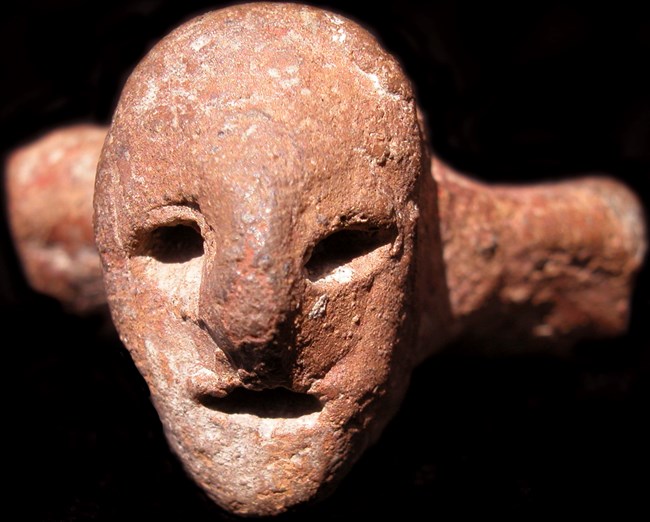
NPS/Parnicza Humans first arrived in the Virgin Islands from South America about 2500 to 3000 years ago. The oldest archeological site found on St. John is near the beach at Lameshur Bay. Today, we know very little about these earliest human inhabitants of the Virgin Islands. These early explorers of the islands were nomadic hunter-gatherers. They likely traveled to the Virgin Islands from South America and made short trips from island to island as they made their way north. They left behind no evidence of agriculture or villages, and likely lived in caves or out in the open. 
NPS photo. The most recent evidence of Taino settlement on St. John dates to the mid-1400’s, years before the arrival of Christopher Columbus. Today, we don’t know why the Taino left St. John. Many archeologists assert that their neighbors to the south, the Island Caribs, may have pushed them out or conquered the Taino of St. John. Visitors can explore Taino culture at the Petroglyph site found on Reef Bay Trail. This site was a sacred place to the Taino, who came there to practice their religion, which was built around the worship of their ancestors. The carvings found at Petroglyphs represent past Caciques whom the living Taino sought to commune with for guidance in the world of the living. Discover more at our archeology page. |
Last updated: August 16, 2022
